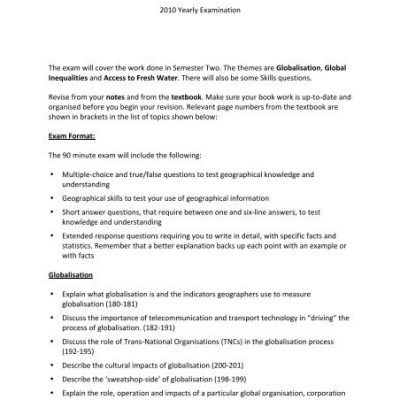Share this:
1.3 WETLANDS AND SWAMPS
Swamps: Is a body of stagnant water which occupies a shallow depression or flat low lying land and dominated by the plants.
–They are common only found near the rivers,lakes and seas.
-they vary greatly in size as some are larger while others are smaller .some of swamps contain water throughout the year while others have water only in some periods
-The favorable topographical nature for the occurrence of swamps include that of:
(1) Flat low lying land
(II)Shallow Depression
TYPES OF SWAMPS
(i)Conifer swamp
Swamps: Is a body of stagnant water which occupies a shallow depression or flat low lying land and dominated by the plants.
–They are common only found near the rivers,lakes and seas.
-they vary greatly in size as some are larger while others are smaller .some of swamps contain water throughout the year while others have water only in some periods
-The favorable topographical nature for the occurrence of swamps include that of:
(1) Flat low lying land
(II)Shallow Depression
TYPES OF SWAMPS
(i)Conifer swamp
These are the one in which the coniferous trees such are cedour , Hemilock predominant.These are common enough in cold temperature areas and the water making swamps are of either precipitation or ice melting.
(ii) Hardwood Swamps
These are also known as the swamps,they are predominant by big trees of hard woods .These are common found in areas of tropical latitude featured by heavy rains and where the hard wood trees predominant.
(iii)Shrub swamps
These have small trees and bushes.These common only found in areas that experience seasonal rains”semi-arid”.
(iv)Mangrove swamp
These dominated by the mangrove trees plants.These are common in areas along the wast of Mangrove require ecology of salty water.
(v)Puprus Swamp
These appear to appear to have purpus plants They are commonly found along the shore of lakes.
Note:Most of the swamps makes “wetland”.
Wetland
(ii) Hardwood Swamps
These are also known as the swamps,they are predominant by big trees of hard woods .These are common found in areas of tropical latitude featured by heavy rains and where the hard wood trees predominant.
(iii)Shrub swamps
These have small trees and bushes.These common only found in areas that experience seasonal rains”semi-arid”.
(iv)Mangrove swamp
These dominated by the mangrove trees plants.These are common in areas along the wast of Mangrove require ecology of salty water.
(v)Puprus Swamp
These appear to appear to have purpus plants They are commonly found along the shore of lakes.
Note:Most of the swamps makes “wetland”.
Wetland
Is a general term applied to an ecosystem intermediates between the terrestrial and aquatic and natural or artificial land escape in which fresh or salt water places a key role that is water logged the water table is at or near the surface or the land is covered occasionally periodically or permanent by shallow fresh or salt water/A land area that is saturated with water either permanently or seasonally.
ECO –SYSTEM.
– Refer to the interaction between living thing and non – living thing and living thing with living thing in the environment.
Water logged -Soil is under water.
Water table – level at which water is found / Settle on the ground surface.
TYPES OF WETLANDS.
Three large groups;
1) Estuarine (coastal/marine ) wetland
2) Fresh water (in land ) wetlands
3) Human made wetlands
1. 1.ESTUARINE/MARINE/COASTAL/SALT WATER WETLANDS
– Estuary – Is a submerged river mouth
– Estuarine – Are linked to estuaries and ocean where fresh and salt water mix. The environment in the estuary is one of ever changing in terms of salinity and temperature the water levels fluctuate in response to wind and tides.
Example
i. Salt water marshes
ii. Mangrove swamp
iii. Delta
iv. Mud Flats
iii. Delta
iv. Mud Flats
2. INLAND WETLAND/FRESH WATER
These are wetlands related to riverine ,Lacustrine,forested.These occur in the interior part of areas.These wetland occur in flat flow lying land of rift valley,flood plains,highlands,drainage basins and plateous lakes shore
These are wetlands related to riverine ,Lacustrine,forested.These occur in the interior part of areas.These wetland occur in flat flow lying land of rift valley,flood plains,highlands,drainage basins and plateous lakes shore
a) Permanent inland deltas
b) Permanent rivers / stream
c) Permanent fresh water lakes including flood plain lakes
d) Seasonal marshes / ponds
3. HUMAN MADE WETLAND
a) Aquaculture ponds – Ponds made by human being for keeping fish.
b) Irrigated land
c) Seasonally flooded agriculture land
d) Excavations – Open pit mining whereby when the depression is filled with water
e) Canals and drainage channel
CHARACTERISTICS OF WETLANDS
-The water table(the ground water) is very near to soil surface
-They occupy the extensive flat low lying land or shallow depression
-Shallow water cover the surface for at least part of the year
-wetland are the habitats of animals
-Some of the animals which make life in wetlands include tortoise,frog mosquito,fish snakes etc
-wetland are supporting the life of different plant species.These include grasses,mangroves,trees etc
CHARACTERISTICS OF WETLANDS
-The water table(the ground water) is very near to soil surface
-They occupy the extensive flat low lying land or shallow depression
-Shallow water cover the surface for at least part of the year
-wetland are the habitats of animals
-Some of the animals which make life in wetlands include tortoise,frog mosquito,fish snakes etc
-wetland are supporting the life of different plant species.These include grasses,mangroves,trees etc
FUNCTION OF WETLANDS
1. Soil anchoring
1. Soil anchoring
Soil from the river is retained by the vegetation which is found on the river mouth whereby as this continues it creates landscapes which can be used for different purpose.
2.They provide food to many different plant and animal
– The combination of shallow water, high nutrient level and primary productivity is perfect for the development of the organism that forms the base of the food chain.
– The water, dense plants they are roots mats and the decaying vegetation are food and shelter for the eggs lava and juvenile of many species (acts as nursery for the eggs ->kids)
– When the plants die they are decompose by bacteria available in the water algae that grow on plants and decomposed matter makes the food for many fishes.
3. Habitat for migrant birds
Bio diversity
A wide variety of organism makes their homes in or around wetland because of the availability of water. For example some wetland provide important temporary –seasonal habitats
The physical and chemical feature such as the land escape shape climate and abundance of water help to determine which species lives in which wetland. E.g. water fowl, ducks and geese.
4. Water storage.
– Wetland absorber water by temporary storing run – off and flood water. This help to protect adjacent and downstream property owners from flood damage.
– The slow the flow of water of which contributes to the wetland ability to store the water. The combine effect of storing and slowing the flow of water allow the water to percolate through the soil into ground water that recharge aquifer and to move through the water shed with less speed and force.
5. Natural water filters.
When water is stored or slowed down by the plant and root mats that grow their sediments settle down and remains in the wetland so that the water living the area is much (less cloudy / clear ) that the water that enter. The loss of turbidity water (dirty water) has important consequences for both human health and the environment of the water shed because turbid water is associated with outbreak of disease due to drinking such water and it also bears silting responsibility for supporting plant and animal in rivers land and estuaries.
6. Recreation
They form good basis for tourist industries
7. Commercial fishes
8. Flood control
Also prevent soil erosion in a number of ways-they reduce sediments being carried into stream and lakes.
9. Research
They form good basis for tourist industries
7. Commercial fishes
8. Flood control
Also prevent soil erosion in a number of ways-they reduce sediments being carried into stream and lakes.
9. Research
Sub – division of estuarine wetland
a) Marine permanent shallow water
– These are in most cases they are less than 6m deep at low tide under this we have; sea bay straits.
b) Marine sub
– Tidal aquatic base – Under this we have; sea grass base, meadows (tropical marine meadows)
c) Coral reef
d) Estuarine waters
e) Intertidal mud, sand or salt flakes
Problem facing wet land development
i. deforestation
ii. Construction
iii.Wastes from industries
iv. River rejuvenation
v.Climatic change – Desertification
vi. Conversion of wetlands into agricultural land
vii. Introduction of aliens species to wetland areas.
vi. Conversion of wetlands into agricultural land
vii. Introduction of aliens species to wetland areas.






3 Comments